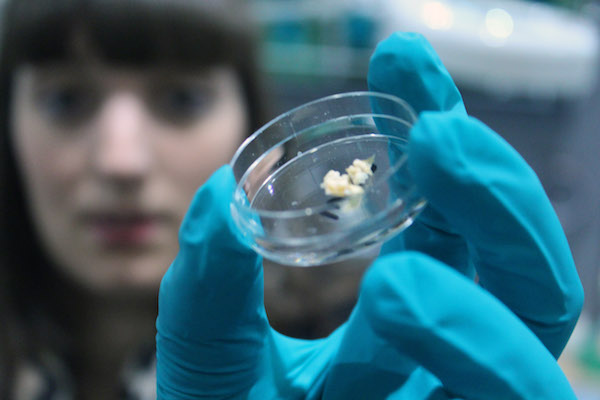
Montreal associate professor advocates for women’s inclusion in science
Scientists from Montreal’s McGill University have uncovered new findings about heart disease right here in Saskatchewan: that different minerals block heart valves in males versus females.
This could change the way heart disease is diagnosed and treated.
Marta Cerruti, an associate professor with McGill University, and her team analyzed damaged heart valves in people who needed transplants at the Canadian Light Source (CLS) at the University of Saskatchewan.
She said they’ve been doing related research for the past couple of years.
The Soft X-ray Microcharacterization Beamline allowed them to see that the build up of minerals in the heart and its progression is slower in females than in males. Additionally, one mineral in particular was mostly on only female samples.
Cerruti said the group started analyzing heart valves with different parameters in mind, one being different sexes. They didn’t expect the results.
“It was quite a surprise,” said Cerruti.
“When we went there we were just analyzing the samples that we got from the surgeon and (it was) only when we started looking at the data, we realized that there was this significant difference, so it’s pretty impressive to see that.”
According to a CLS news release, heart disease is the leading cause of death across the world.
Historically, as Cerruti explained, scientific and medical studies have not included females—both in collecting data and as scientists themselves.
Cerruti said she’s seen this inclusion develop throughout her career.
“Now, this is really getting hammered in the researchers even by granting agencies, so your proposal will not go through if you don’t explain clearly why you selected that specific population,” she said.
Cerruti said they’re are also making science more equitable by encouraging female participation.
“That is the way science should be done,” she said.
Not only it is a topic of equity, not including certain demographics could skew your data.
“If drugs are developed always only considering the average 30-year-old male, then you’re missing out on possible side effects that could happen to females,” she said.
“That’s just an example, but you can imagine more in the bigger picture.”
The research group is also trying to develop an improved delivery system for currently-recommended drugs or new drugs.
“We want make a system that helps to deliver the drug to the exact correct location so that they help remove mineral buildup in your heart arteries and valves without harming your bones or your teeth,” said Cerruti.
Researchers plan on returning to CLS to discover why different minerals appear on the hearts of males and females. Cerruti said they’ll most likely return next year.
“Understanding why is the first priority,” she said.
“The hope is that we could get a cure that might be better.”

